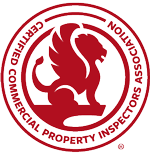Many people take unnecessary risks and ultimately make bad investments by not performing proper due diligence. Whether you’re the purchaser of a property or a broker helping a client, you must learn about the inspection part of the real estate due diligence process so that no items are overlooked. Learning about the inspection is like learning anything else: the more you research and are involved, the more likely you’ll find success investing in real estate. Commercial property inspection checklists are a great learning tool for commercial real estate investing.
Commercial Property Inspection Checklist
There are many types of commercial properties, such as office buildings, restaurants, warehouses, hotels, apartment buildings, etc. Since there is such a variety, sometimes inspections are guided by the building’s nature and use. But, in any case, a building inspection generally includes the major systems and components vital to the performance of a building, including:
- heating and ventilation systems;
- air-conditioning system;
- plumbing system;
- mechanical and electrical systems;
- roof surface, drainage, and penetrations;
- exterior elements and fixtures;
- general topography of the building site;
- parking areas and sidewalks (for barriers to accessibility);
- wood decks and balconies;
- basement, foundation, and crawlspace;
- doors, windows, and interior;
- life-safety components;
- kitchen (including storage);
- and other areas that are specific to the subject property.
Commercial real estate professionals, like brokers and building owners, should, at a minimum, make a mental note of the aforementioned items. They’re often the most costly to maintain and repair and can greatly affect a building’s initial financial analysis.
Commercial Property Inspection Checklist Template
For more detailed information, refer to the International Standards of Practice for Inspecting Commercial Properties (ComSOP). The ComSOP is the industry-accepted commercial inspection guidelines that CRE professionals can use as a commercial property inspection checklist template. Refer to this checklist when viewing potential buildings and when reviewing due diligence reports and other documents. It’s available online for free and can be formatted as a PDF.
In addition to providing an overview of the technical inspection, the ComSOP sets a procedure for the review of important documents and records for the building. Some relevant documents may include property warranties (roof, mechanical, etc.), Certificates of Occupancy, utility bills, building permits, notices of code violations, repair invoices, and maintenance records. Refer to the ComSOP for a complete list to use as a checklist. Many critical issues can be inferred about the building and its history from these documents and records.
Commercial Due Diligence
Many people buying commercial real estate don’t have the experience necessary to conclude whether a property they want to acquire is sound. For example, in Brian Hennessey’s book The Due Diligence Handbook for Commercial Real Estate, he states:
“A few of the places I ask to see when inspecting a property are the mechanical rooms… I can usually tell very quickly how a building is being maintained by the way these various places are maintained: their cleanliness and orderliness, and how organized everything is. If I see things in disarray, scattered haphazardly with trash, dirty equipment… there’s an excellent chance that the building will have issues and equipment in disrepair and not properly maintained. Don’t pass up the opportunity to look for these indicators when performing due diligence.
These are reliable telltale signs that trouble is lurking and needs to be uncovered. On the other hand, don’t allow yourself to be misled by newly painted equipment and squeaky-clean equipment rooms. These may be a mask to hide some issues that are there, but hard to discern without a thorough inspection by qualified inspector… Some sellers are very adept at steering you away from problems, so you don’t want to get lulled into a false sense of security.”
Recognizing this, potential buyers should hire a commercial property inspector. The building inspection’s cost depends on the size and complexity of a property. It’s usually more costly if a complete records review is performed in addition to a technical inspection.
Utilizing the property inspection checklist template will prepare you for setting the inspector’s scope and evaluating their inspection report. It will also help you discover potential deficiencies during your first visit to the property and items of interest to mention to the inspector. Learn more about how to prepare for an inspection and how to prepare for your real estate transaction.


